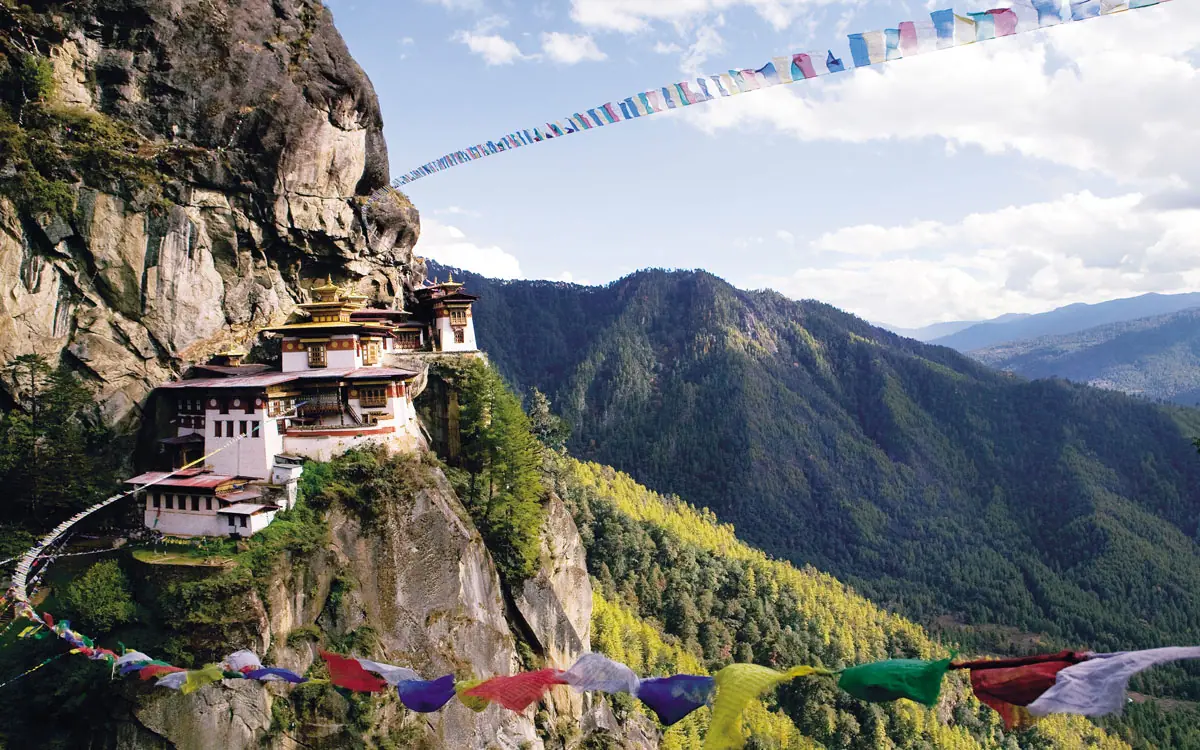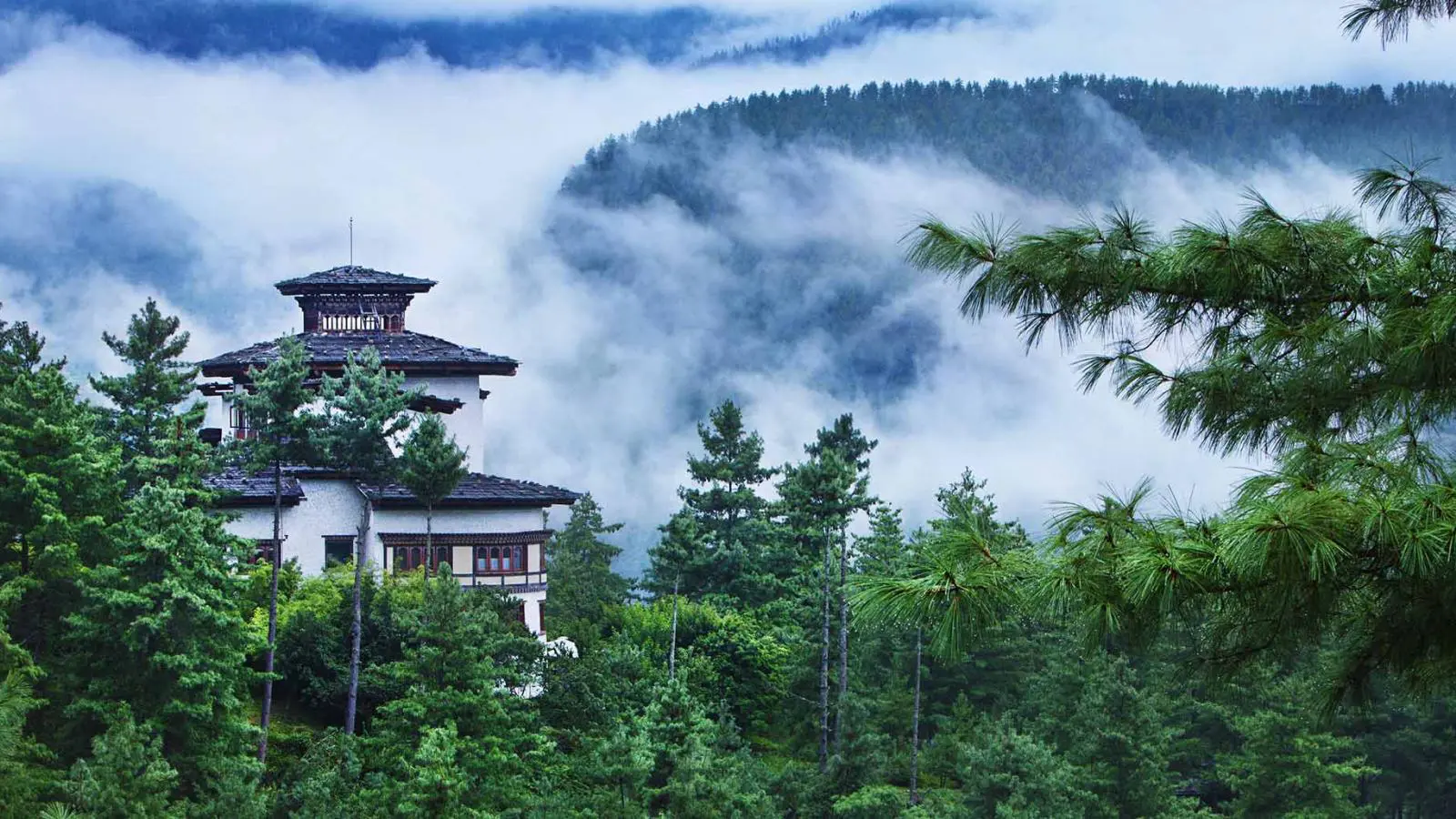When it comes to planning a trip to Bhutan, many travel experts often recommend visiting during Spring or Autumn, as these seasons offer the perfect weather and the opportunity to witness vibrant festivals. However, Bhutan is a year-round destination, and each season offers its own unique charm and beauty. Whether you’re looking for pleasant weather, festivals, trekking opportunities, or lower tariffs, there’s a season for every traveler. Here’s an overview of what each season has to offer in Bhutan.

Spring (Mid-March to May)
Ideal for Enjoying Festivals, Trekking, and Pleasant Weather
Spring is a season of renewal, with the winter chill gradually giving way to warmer and more comfortable temperatures. The landscape transforms into a vibrant display of nature, with lush greenery and colorful flowers like Rhododendrons and Magnolias in full bloom. This is an excellent time to visit if you want to enjoy Bhutan’s natural beauty at its peak. The weather is pleasant, making it perfect for outdoor activities such as trekking.
Spring is a time when Bhutan comes alive with vibrant festivals. Notable events like the Grand Paro Festival, Punakha Domchoe, and the Chorten Kora Tshechu take place during this period. The Ura Yakchoe and Rhododendron Festival also add to the lively cultural experience, making Spring one of the best times to visit Bhutan.
Summer & Monsoon (June, July, August)
Ideal for Lower Tariffs and Lesser Crowds, But Not Suitable for Trekking
Summer in Bhutan offers lush, green landscapes as the mountains and valleys come alive with fresh growth. This time of year brings vibrant vegetation, including flourishing rice fields and lush forests, creating a breathtaking backdrop. While the weather can be warm and the skies often clear, summer also marks the beginning of the monsoon season, bringing occasional rain. This makes it a great time to visit Bhutan if you’re looking to avoid crowds and enjoy lower tariffs, but it’s not the best season for trekking due to the rain. However, the Haa Summer Festival is one of the notable cultural events that takes place during the summer months. While the monsoon doesn’t bring the heavy rainfall typical of many other parts of South Asia, it does add an ethereal atmosphere to the landscape, making it an ideal time for nature walks and photography.
Autumn (September, October, November)
Perfect for Festivals, Trekking, Nature, and Photography
Autumn is often regarded as one of the best times to visit Bhutan, thanks to its crisp, sunny days and stunning natural beauty. This season is particularly famous for its festivals, such as the Thimphu Tshechu, which draws visitors from around the world to witness the spectacular mask dances performed at the Thimphu Dzong. The Black Necked Crane Festival in November is another highlight of this season. Nature enthusiasts will also appreciate the clear skies and vibrant fall foliage, which create picturesque scenes for photography. Autumn is also an ideal time for trekking, as the weather is generally stable and favorable for outdoor activities. The combination of festivals, natural beauty, and perfect trekking conditions makes Autumn a favorite among travelers.
Winter (December, January, February)
Best for Snowfall, Lower Tariffs, and Snow-Capped Himalayas

Winter in Bhutan is a magical time, especially for those who enjoy snow and photography. From December to February, Bhutan experiences snowfall at higher elevations, transforming the landscape into a winter wonderland. The snow-capped peaks of the Himalayas provide a stunning backdrop, perfect for photography. If you’re looking for a tranquil experience away from the crowds, winter is a great time to visit, as the country is quieter during this season. However, keep in mind that the roads can sometimes be blocked due to heavy snow, so it’s wise to build in some buffer time when planning your itinerary. Winter is also the time when many locals take holidays, so visitors can experience a festive, relaxed atmosphere.
Conclusion:
Choosing the Best Time for Your Visit
Ultimately, the best time to visit Bhutan depends on your personal preferences and the experiences you’re seeking. For those looking to trek and experience Bhutan’s vibrant festivals, Spring and Autumn are ideal. If you’re looking for lower tariffs and fewer tourists, Summer and Winter may be more suitable, though trekking during these seasons may be less favorable. No matter when you choose to visit, Bhutan offers something special throughout the year, from festivals to stunning natural landscapes. So, pack your bags, choose the season that suits you best, and embark on a journey to explore the beauty of Bhutan.

